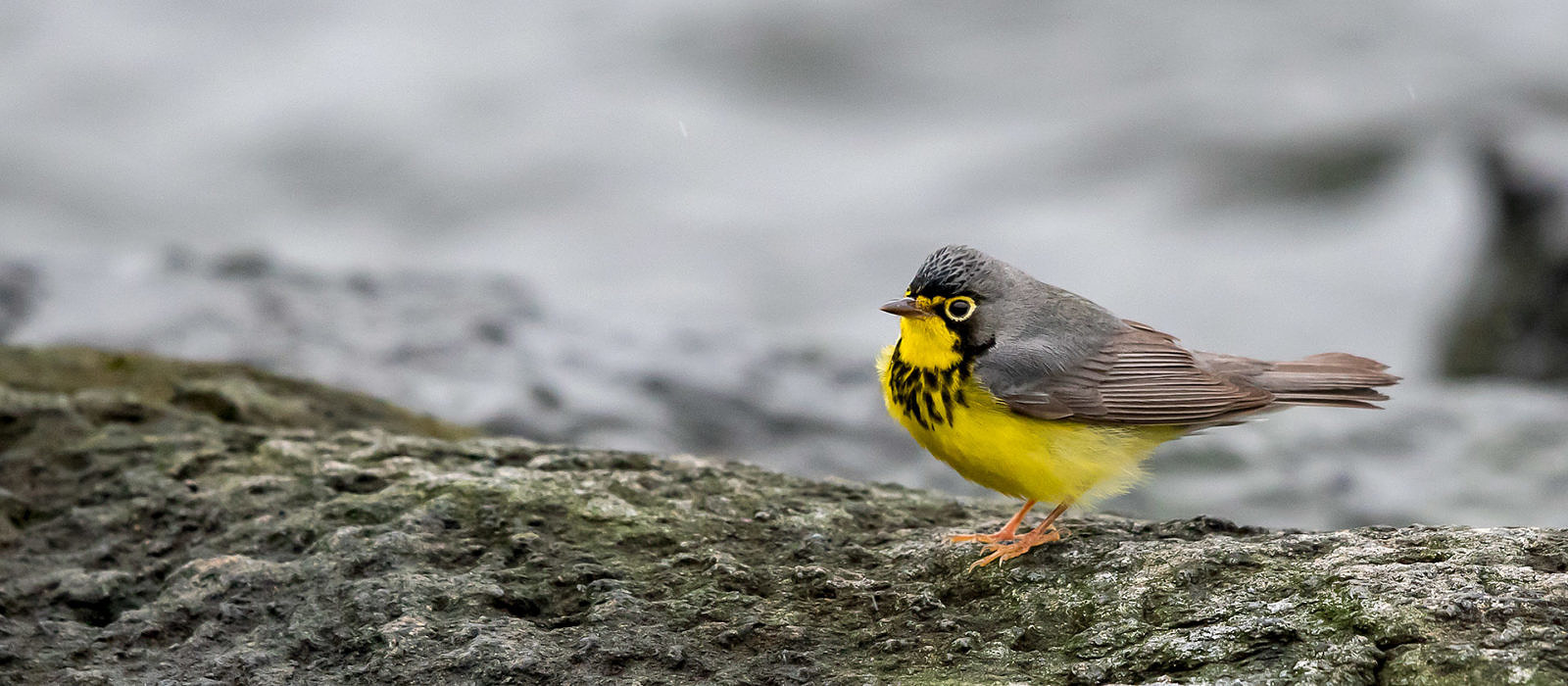
When Songbirds Fall to Earth
Image: Canada Warbler by Josh Lincoln
In the darkness before dawn on May 19, 2019, thousands of songbirds, each an expression of spring, were flying north toward forests across the U.S. and Canada. Or maybe millions were migrating over the continent — it doesn’t really matter how many. What matters is that at one point during their journey some of the migrants veered off-course and ended up flying into fog over the Gulf of Maine.
For a songbird weighing barely a half-ounce, in the event of a water landing, well, there is no water landing; there is only death. So as the sun rose and pushed light into the fog, the exhausted migrants, perilously close to waves, made their way to a tiny, rocky outpost 10 miles off Maine’s midcoast. And to those of us waiting there on Monhegan Island that morning, the fog delivered a shocking spectacle of warblers.
Blackburnian Warblers glowed like tiny flames in the island’s white spruce trees. Black-throated Green Warblers darted among stacks of crippled lobster traps and piles of variegated coiled rope. Bay-breasted Warblers displayed the most pleasing blend of chestnut, black and tan from beaches and rocky ledges. In total, nearly two dozen different warbler species, two dozen rainbows in two dozen patterns, joined the performance on an island only a mile-and-a-half long by a half-mile wide.
Few of the one hundred or so people on Monhegan that morning — lobster fishermen, merchants, summer residents, laborers, artists or birdwatchers like me — could have avoided the warblers even if we had tried. Few of us will ever forget them.
If you are not much of a birdwatcher, but perhaps have watched birds in magazines or online, you might be unaware of the wonder and rarity of warblers hopping around on a rocky island in the Atlantic Ocean. After all, you’ll find plenty of lovely warbler photos like these elsewhere online, but those are mostly one-offs that in no way convey the joy and sadness and irony of what happened on Monhegan Island that week.
During a fallout the heavens rain birds. It’s often bad for birds and euphoria for birdwatchers.
After all, warblers are nothing if not forest songbirds. Had they dropped from the skies into Monhegan’s trees and shrubs, that might have been expected — and wonderful enough. Birdwatching has plenty of such predictable events, and we birders have our personal favorites. But the warbler performance on Monhegan was serendipitous. We call it a fallout, a noun usually reserved for something bad: what we get after nuclear war, for example, or a political scandal. During a birdwatching fallout the heavens rain birds. The cause is usually foul weather. When migrating songbirds encounter a storm or fog while in flight, when they’re exhausted or disoriented, they’ll drop from the skies to seek safety below. Peninsulas and islands are often their first or only landfall. What’s bad for birds is great for birdwatchers.
Rather than descend into Monhegan’s trees, hundreds of the arriving warblers began to feed on tiny flying insects in plain sight along wrack lines on beaches and on exposed bedrock at the island’s shoreline. With a few flaps of their tiny wings, each warbler would leap from the ground a foot or so, snatch an insect in its bill, and then flutter back to bedrock or beach. Some wandered the coarsely mown lawns in the island’s tiny village or stood in the path of pickups on Monhegan’s rugged gravel roads.
To fully grasp the joy of watching warblers flycatching from the ground like this, you should know that warblers are normally fickle, too often granting us brief, satisfying glimpses and then vanishing into the forest and leaving us wistful and longing for more. No self-respecting warbler has any business dancing around on bedrock at the shorelines, much less at our feet.
Yet during the two days of this particular fallout I was never wanting for warblers. If I found myself squinting into the bright sun toward a Chestnut-sided Warbler, I could turn instead to find a Blackpoll Warbler, a Black-throated Blue Warbler or a Canada Warbler flycatching in almost any other direction. Even the Ovenbird, among our most still and stealthy woodland warblers, displayed his shocking orange racing stripe without interference from any forest leaves. And when I looked up from the bedrock toward a flowering apple tree nearby, I could find Cape May Warblers, sporting chestnut cheeks, and Northern Parula warblers, displaying a second sunrise on their breasts, at eye-level, almost close enough to touch, plucking insects from gaudy white blossoms.
Most anywhere I walked on Monhegan I found warblers and other songbirds too hungry, too disoriented or too tired to fly away from me. It was like having personal audiences with all the people you might love, respect, worship or lust after — all day long until you were sated. Rarely do I turn away from a warbler displaying in plain sight; I did it regularly on Monhegan.
And I should point out that I am not making any of this up. As it turns out, songbird fallouts are a lot like fish tales — exaggerated or even apocryphal. Birders often talk of finding spruces, adorned with warblers, “lit up like Christmas trees,” which I’ve seen only a couple of times in four decades of birding. Yes, fallouts like this happen, but not as often anymore because there aren’t as many songbirds anymore. A new generation of birdwatchers may never see anything like what happened on Monhegan Island last week.
The irony is that we rejoice in the songbirds’ misfortune. As it turned out, the same weather system that blew warblers out to Monhegan Island also brought waves of songbirds to much of the Northeast in late May. And perhaps the greater irony is that millions of people who went about their business those mornings never noticed the warblers in their own backyards and parks. So maybe the songbirds’ misfortune is ours as well.
Each spring, billions of birds migrate so near to us and yet so far from our recognition or understanding. Along the way, they navigate our littered landscapes: wetlands filled for shopping malls, forests cleared for condominiums, prairies razed for corn, and mountaintops blasted away for coal. The birds, far fewer as a result, migrate nonetheless. And we can be reminded of their perilous journeys when we hear them sing overhead right now or we take the time to watch them in our trees.
Or even when the fog might deliver to us such euphoria that we are obligated to hold these castaways aloft and protect them for as long as we walk this earth.
A Gallery of Grounded Songbirds
Monhegan Island, Maine / May 19 and 20, 2019
(Click any image for a big view or to start a slideshow.)
More From Monhegan Island

The Falcon and Flycatcher
A flycatcher dies in a falcon's grip, and then falls gracefully to earth. Oh, and Scarlet Tanagers — lots of Scarlet Tanagers.

Love Letter to Monhegan
Sure, I miss the birds and vistas on one of the most beautiful places on this Earth. But what I miss most is the Monhegan melting pot.

A Vireo Underwater
Here on Monhegan Island, off Maine's midcoast, I noticed a Philadelphia Vireo this morning — underwater.


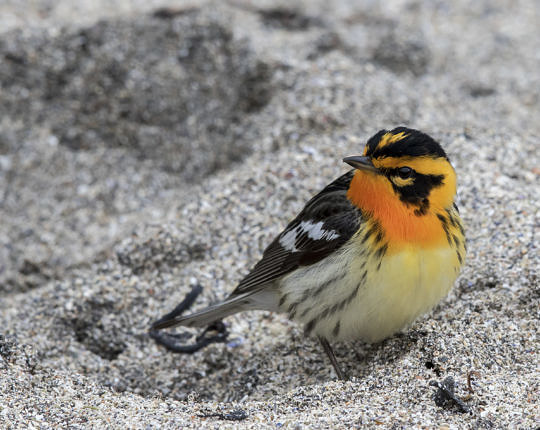


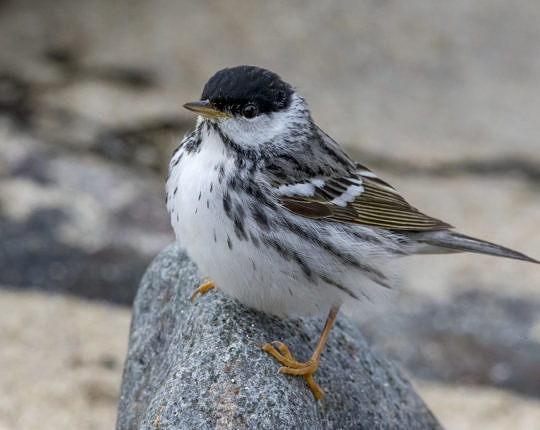




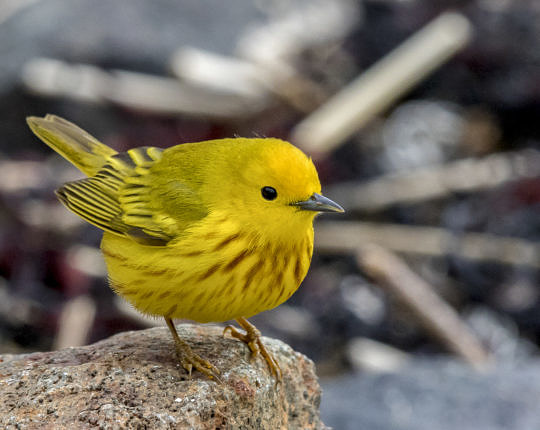











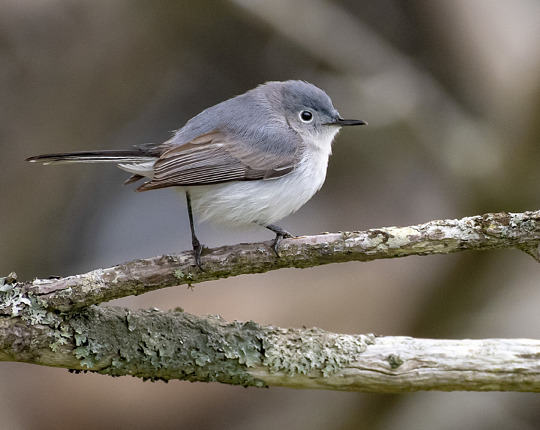



Thanks, Rebecca. Yes, rearing Monarchs AND Monhegan are good for the soul! 🙂
My husband and I and a neighbor raised and released 70 Monarchs this year! What an honor to have these incredibly beautiful butterflies in our yard . we didn’t get to tag them this year. We were not expecting such a lage group! Next year we will be better prepared!
Thanks and praise go to our wonderful creator, Jehovah God.
Thank you for this beautiful article.
I love Monhegan! I spent time out there summers with my aunt Josephine Day at the Trailing Yew!
Thanks, Michael. Might we see you in Austin?
Delightful post, Bryan. Thanks.
Yes, my most “epic” fallout was at Pt. Pelee — about 20 years ago. At the Point, in a small stand of cedars, I recall 40 warblers of 15 species. That was one of those “Christmas tree” moments. I’ll never forget it. At dawn, on my walk out to the point that morning, I passed a dozen Blackburnian Warblers in a bare tree, a Sedge Wren in the woods (yeah, really, in the woods), and countless other spectacular avian adventures. Then, as I walked from the point back toward the visitor’s station, a Veery hopped in front of me on the path, seeming to lead me to a Hooded Warbler and a Kentucky Warbler. And when I arrive back at the visitor’s station, a male Wester Tanager was singing from a high perch. You can’t make this stuff up! 🙂
We’re approaching that season of maximum flying things (birds and insects) — I’d say diversity and abundance peak in late June. Thanks, Chris!
Glad you got to experience it as well, Bill!
Thanks, Rita. This has indeed been a wonderful spring — wet (lots of mosquitoes out there) but wonderful. Onward toward summer!
Yikes! Well, that’s the brutality that happens often but that we often don’t see in nature.
Thank you for sharing these! Wally and I once experienced a similar fall-out at Point Pelee, Ontario, Canada (Lake Erie). Decades ago but we will never forget it.
You were so lucky to see these beautiful birds. In North Hero last weekend, we saw a pair of Great Crested Flycatchers at my camp. Big and amazing!
I saw two robin babies under my deck take their first flights last week. Now I have a house finch sitting on eggs after she fixed up an old robin’s nest to suit her!
I was there with my wife on May 19th. It was wonderful to see all of the birds.
The courage, the strength, the colors!
Thank you so much for this Bryan.
Spring has been an amazing treat.
We humans have it so easy in comparison!
Just saw a dead doe in the creek behind VCFA, she had an aborted fetus still connected to her. Wonder if she was killed by dogs or died giving birth? Anyways now one day after she died, the turkey vultures have almost picked her clean. Amazing to note! Love your posts and writing!!
Thanks, Marjorie. Warblers embody beauty — so it makes writing about them easier. And I’m reminded of the Rachel Carson quote upon her receiving such praise for “The Sea Around Us”: “If there is poetry in my book about the sea, it is not because I deliberately put it there, but because no one could write truthfully about the sea and leave out the poetry.”
You’re welcome, Doreen. I’m so glad I could share it.
It’s one of my most sacred places on Planet Earth.
Thanks, Jane. Oh, we do indeed let things be out there. These off-course adventures aren’t anything new — and the birds in general do okay with this as part of their biology. Now, if we can only instead help them with all the routine abuses we perpetrate on birds. Maybe this essay will help us all do out best.
Hi Mike, I’ll be there. Hope to see you! I have indeed retired from guiding. I do miss everyone on those outings, but I’m cherishing quieter visits to Monhegan with Ruth.
Thanks, Meredith. And if those warblers aren’t enough — we’ve got insects, far more abundant and diverse than birds, and far more unknown to us. Oh, the possibilities.
Beautiful essay. Thank you!
Brilliant piece, such a “catch” of nature’s splendor. Thanks Bryan.
Thanks Bryan for a beautifully written piece, and gorgeous photos. I have been thinking about a visit to Monhegan for years, resolve now to make it happen.
What a stunning, sublime experience, like something in a Kurosawa film. These photos are all the more exquisite for the setting, their jewel tones blaze against the craggy coast outcrop. I wondered whether any attempt is/can/should be made to assist them, or would that be counter to letting nature run its course? Thanks, Bryan. Reminds me of Richard Thompson’s tune, “A Bird in God’s Garden”.
Beautiful writing, Bryan, as usual. I would have liked to witness this little miracle, but your words helped me to “see” it anyway. The photos you collected are just spectacular. I am so grateful that you share your experiences with us! I read earlier that you have retired from leading trips. Wondering if you will be on the island anyway in September. mike
This is just a splendid account of these warblers and their endurance test migration. The accompanying pictures make me incredulous at these tiny marvelous creatures mostly unknown to us humans.
Ah, now I can hear all the island sounds — thank you!
Great question, Catherine. Some sing in migration routinely, others don’t routinely. And some sing occasionally. Overall, there isn’t much of a dawn chorus — not like when these birds are on breeding grounds. The vast majority of them leave Monhegan, whose woods can be fairly quiet in summer. Basically, the place sounds like the ocean and wind and, actually, voices — lots of voices. The village (where many birds often fall out) is so small that we can often hear various conversations, except in the morning when it’s quiet or we hear (more often in fall, at least for me) Gray Seals wailing in the distance. The island also has a stable of pick-ups (owned mostly by inkeepers, lobster fishermen, contractors, etc). Some would pass as “farm trucks” here in Vermont. So we hear those as well. Come to think of it, I don’t believe I’ve ever seen an actual car on Monhegan. Golf carts and work ATVs — no cars! 🙂
Thanks so much, Veer. I was indeed moved by this — and amazed and grateful and … simply happy.
Oh, termites and warblers. Now that’s something I want to see! 🙂
Only missing were you and Jane and Bill!
Hi Dayton and Sarah,
I as well go back to the “Crane Creek” days over there. Oh, the memories from 30 or 40 years ago: spectacular birding on so many days. It’s still amazing there, of course (except for the crowds). Best to you — and please send my best to the Megyesis!
Thanks, Joanna, very much. It was a joy to witness this — and an honor to bring it to folks. Of course, as you know, we can find joy like this in lots of places as well, but birds seem to be some of the best messengers.
Yes, Mark. Same here — 30-40 years ago, in the Midwest, we on occasion had 30-warbler days. No more. And, yes, I do hope we get to see more of these events before our birding days are over.
I’m really glad we have the photos to help illustrate this. Thanks, Maryella!
It’s a mix — some do fine, some probably not, some might not even make it to land and perish at sea. It’s rough flying all night.
Thanks, Rosanne. I’m glad you could see some of it.
Beautiful! Do they sing? Or are they just too exhausted and need food? Was it quiet? I’d like to hear about any sounds you heard.
I find this post a moving essay on our relationship to nature, chance, and responsibility. Thank you, Bryan.
Just marvelous. I remember a flyout of termites in the North Woods of Central Park when I had just started birding. A myriad of dazzling warblers danced and dipped as they fed. I was astonished, as I still am, every time I look at a bird.
Bryan, as ever, wonderful work. Thank you. The island abides.
Hi Bryan,
We remember warbler and other fallouts at Crane Creek (now Magee Marsh) year’s ago with the Megyesis and 2 couples we met on a Costa Rica birding trip. We only wish we could have been with you on Monhegan. Wonderful photos. Thanks.
I smiled the entire way through reading this blog post and wished so much I could have experienced the spectacle. You are so fortunate to have seen it and we are lucky that you could tell us about it.
In 55+ years of birdwatching I have seen only four of these fallouts, none in the past 20 years. Still, the memories are indelible, not only of the sheer number and variety of migrants, or that these normally skulking treetop feeding birds are low, out in the open and close up. What I found most amazing about the fall-outs that I’ve seen is that these normally peripatetic birds are so exhausted they actually stand still for great lengths, so you can appreciate them at leisure or photograph them. I envy your experience, and I hope I get to see at least one more of these miraculous displays before my birding days are over
Very interesting per usual and the slide show just wonderful.
Thank you again.
so with all the warbler fallout, do they have a good chance to get their strength back and return to the mainland?
Loved all the beautiful birds in Maine. I’m sad I could not be there to witness their beauty. Thanks for the photos.